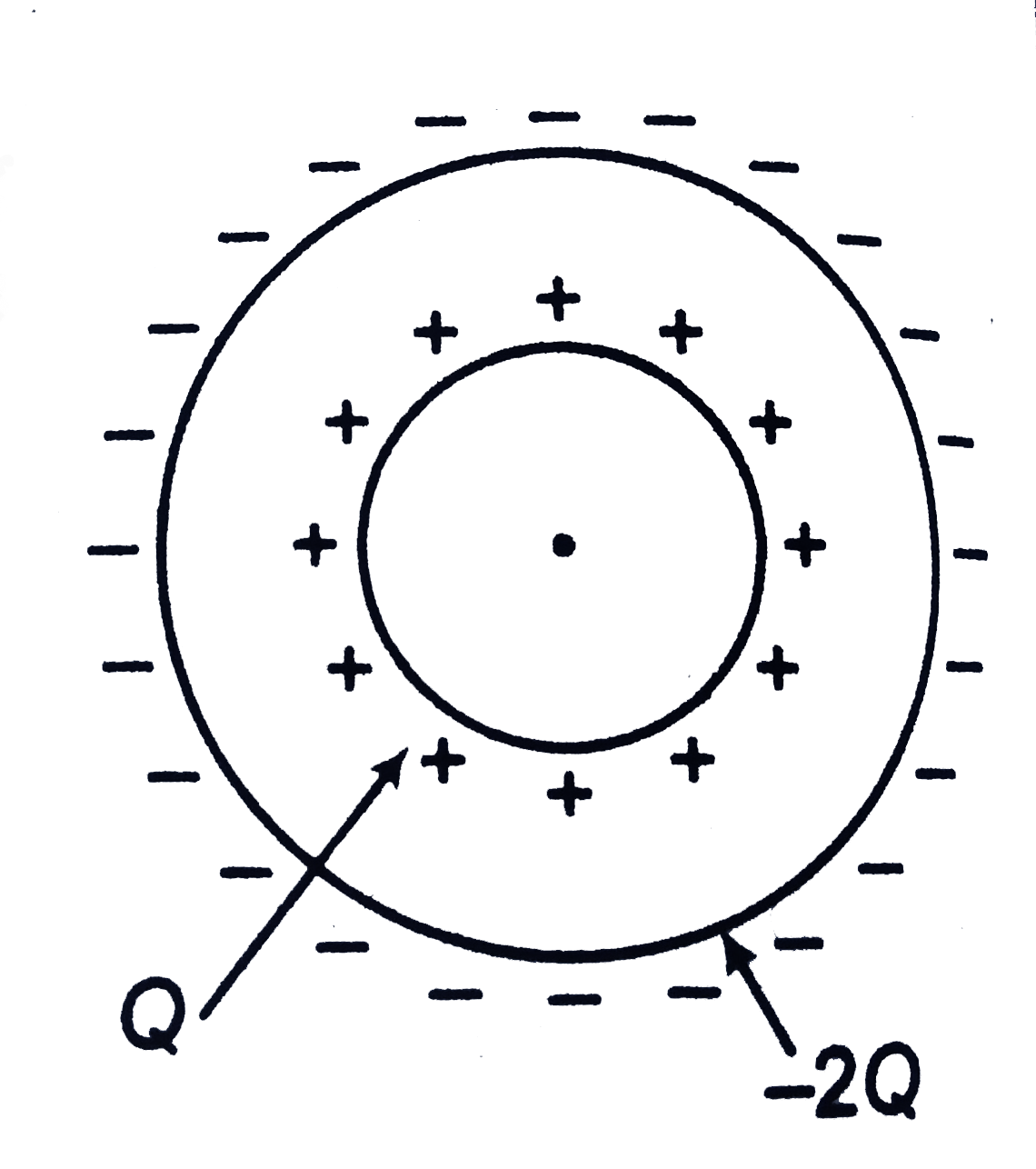In the following question a statement of assertion (A) is followed by a statement of reason (R )
A : Two large conducting spheres carrying charges Q1andQ2 are brought close to each other. The magnitude of electrostatic force between them is exactly given by Q1Q2/4πε0r2 , where r is the distance between their centres.
R: Here charges Q1andQ2 can be assumed to be concentrated at the centres of their respective spheres.
If both Assertion & Reason are true and the reason is the correct explanation of the assertion , then mark (1).
If both Assertion & Reason are true but the reason is not correct explanation of the assertion then mark (2)
If Assertion is true statement but Reason is false, then mark (3)
If both Assertion and Reason are false statements , then mark (4).
The correct Answer is:D
To solve the problem, we need to analyze the statements of assertion (A) and reason (R) provided in the question.
Step 1: Understand the Assertion (A)
The assertion states that the magnitude of the electrostatic force between two large conducting spheres carrying charges Q1 and Q2 is given by the formula:
F=Q1Q24πϵ0r2
where r is the distance between their centers.
Step 2: Analyze the Validity of Assertion (A)
This formula is derived from Coulomb's law, which applies to point charges. However, for large conducting spheres, the charge resides on the surface of the spheres, and the assumption that the charges can be treated as point charges is valid only when the distance r is much larger than the radius of the spheres. Therefore, while the assertion can be true under certain conditions, it is not universally applicable to all configurations of large conducting spheres.
Step 3: Understand the Reason (R)
The reason states that the charges Q1 and Q2 can be assumed to be concentrated at the centers of their respective spheres.
Step 4: Analyze the Validity of Reason (R)
In the case of conducting spheres, the charges actually reside on the surface of the spheres, not at their centers. Therefore, the reason provided is incorrect.
Step 5: Conclusion
Both the assertion and the reason are false. The assertion is not universally valid for all configurations of large conducting spheres, and the reason is incorrect because the charges are on the surface, not at the centers.
Final Answer
Both the assertion (A) and the reason (R) are false.
---
The assertion states that the magnitude of the electrostatic force between two large conducting spheres carrying charges Q1 and Q2 is given by the formula:
This formula is derived from Coulomb's law, which applies to point charges. However, for large conducting spheres, the charge resides on the surface of the spheres, and the assumption that the charges can be treated as point charges is valid only when the distance r is much larger than the radius of the spheres. Therefore, while the assertion can be true under certain conditions, it is not universally applicable to all configurations of large conducting spheres.
The reason states that the charges Q1 and Q2 can be assumed to be concentrated at the centers of their respective spheres.
In the case of conducting spheres, the charges actually reside on the surface of the spheres, not at their centers. Therefore, the reason provided is incorrect.
Both the assertion and the reason are false. The assertion is not universally valid for all configurations of large conducting spheres, and the reason is incorrect because the charges are on the surface, not at the centers.
Both the assertion (A) and the reason (R) are false.
Topper's Solved these Questions
- ELECTROSTATIC POTENTIAL AND CAPACITANCE BOOK - AAKASH INSTITUTE ENGLISHCHAPTER - ELECTROSTATIC POTENTIAL AND CAPACITANCE EXERCISE - ASSIGNMENT SECTION - C
53 Videos
- ELECTROMAGNETIC WAVESBOOK - AAKASH INSTITUTE ENGLISHCHAPTER - ELECTROMAGNETIC WAVESEXERCISE - ASSIGNMENT SECTION - D Assertion-Reason Type Questions
25 Videos
- GRAVITATION BOOK - AAKASH INSTITUTE ENGLISHCHAPTER - GRAVITATION EXERCISE - ASSIGNMENT SECTION - D (ASSERTION-REASON TYPE QUESTIONS)
15 Videos
Similar Questions
Two large conduction spheres carrying charges Q1 and Q2 are brought close to each other. Is the magnitude of the force between them exactly given by Q1Q2/4πε0r2. Where r is the distance between their centers.
View SolutionThe electrostatic force between two charges Q1andQ2 at separation r is given by F=K.Q1Q2r2 The constant K
View SolutionThe insulated spheres of radii R1 and R2 having charges Q1 and Q2 respectively are connected to each other. There is
View SolutionThe insulated spheres of radii R1 and R2 having charges Q1 and Q2 respectively are connected to each other. There is
View SolutionA conducting sphere of radius R and carrying a charge Q is joined to an uncharged conducting sphere of radius 2R. The charge flowing between them will be
View SolutionSelf energy of conducting sphere of radius .r. carrying charge .Q. is ______
View SolutionA charge Q is divided into two charge q and Q-q. The value of q such that the force between them is maximum is
View SolutionFind out potential energy of the two point charge system having charges q1 and q2 separated by distance r.
View SolutionTwo concentric conducting spheres of radii R and 2R are crrying charges Q and −2Q, respectively. If the charge on inner sphere is doubled, the potetial differece between the two spheres will

View SolutionTwo concentric conducting shells of radii R and 2R are having charges Q and -2Q respectively.In a region r
View Solution
